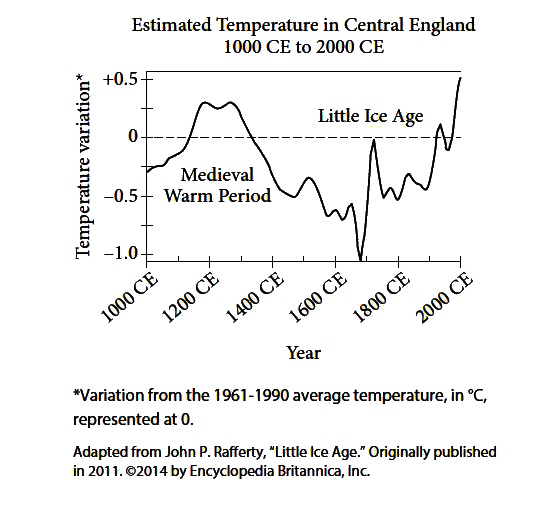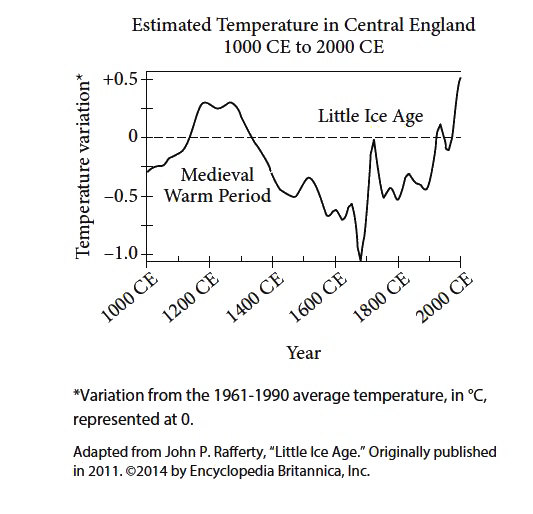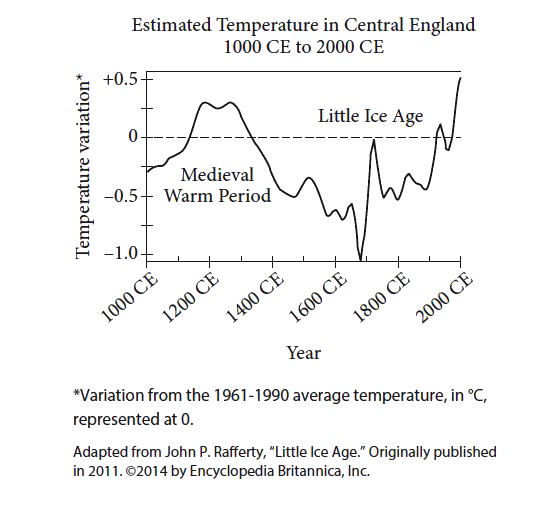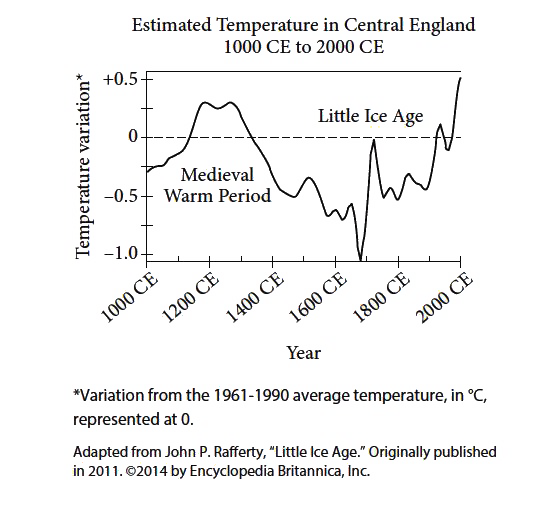The recent record of ……... Years old viable seed is of the data palm, phoenix dactylifera , discovered during archaeological excavation at king Herod's palace near the dead sea.
Bamboo
Areca Plam
Coconut
Date plam.
The correct Answer is:D
Step by step video & image solution for The recent record of ……... Years old viable seed is of the data palm, phoenix dactylifera , discovered during archaeological excavation at king Herod's palace near the dead sea. by Biology experts to help you in doubts & scoring excellent marks in Class 12 exams.
Topper's Solved these Questions
- BOOK - DINESH PUBLICATION ENGLISHCHAPTER - SEEDSEXERCISE - Assertion1videos
SEEDS
- BOOK - DINESH PUBLICATION ENGLISHCHAPTER - SEEDSEXERCISE - CHECK YOUR GRASP10videos
SEEDS
- BOOK - DINESH PUBLICATION ENGLISHCHAPTER - SEEDSEXERCISE - CHECK YOUR GRASP10videos
SEEDS
- BOOK - DINESH PUBLICATION ENGLISHCHAPTER - ROOTEXERCISE - CHECK YOUR GRASP10videos
ROOT
- BOOK - DINESH PUBLICATION ENGLISHCHAPTER - SENSE ORGANS EXERCISE - All Questions285videos
SENSE ORGANS
Similar Questions
Knowledge Check
- Question 1 - Select One
This is an example of a very old viable seed excavated from Arctic Tundra. The seed germinated and flowered after an estimated record to 10,000 years of dormancy. It is
AVictoriaBLupinus arcticusCPhoenix dactyliferaDStrobilanthus kunthiana - Question 2 - Select One
About 750 years ago, a powerful volcano erupted somewhere on Earth, kicking off a centuries-long cold snap known as the Little Ice Age. Identifying the volcano responsible has been tricky.
That a powerful volcano erupted somewhere in the world, sometime in the Middle Ages, is written in polar ice cores in the form of layers of sulfate deposits and tiny shards of volcanic glass. These cores suggest that the amount of sulfur the mystery volcano sent into the stratosphere put it firmly among the ranks of the strongest climate-perturbing eruptions of the current geological epoch, the Holocene, a period that stretches from 10,000 years ago to the present. A haze of stratospheric sulfur cools the climate by reflecting solar energy back into space.
In 2012, a team of scientists led by geochemist Gifford Miller strengthened the link between the mystery eruption and the onset of the Little Ice Age by using radiocarbon dating of dead plant material from beneath the ice caps on Baffin Island and Iceland, as well as ice and sediment core data, to determine that the cold summers and ice growth began abruptly between 1275 and 1300 C.E. (and became intensified between 1430 and 1455 C.E.). Such a sudden onset pointed to a huge volcanic eruption injecting sulfur into the stratosphere and starting the cooling. Subsequent, unusually large and frequent eruptions of ther volcanoes, as well as sea-ice/ocean feedbacks persisting long after the aerosols have been removed from the atmosphere, may have prolonged the cooling through the 1700s. Volcanologist Franck Lavigne and colleagues now think they’ve identified the volcano in question: Indonesia’s Samalas. One line of evidence, they note, is historical records. According to Babad Lombok, records of the island written on palm leaves in Old Javanese, Samalas erupted catastrophically before the end of the 13th century, evastating surrounding villages—including Lombok’s capital at the time, Pamatan—with ash and fast-moving sweeps of hot rock and gas called pyroclastic flows. The researchers then began to reconstruct the formation of the large, 800-meter-deep caldera [a basin-shaped volcanic crater] that now sits atop the volcano. They examined 130 outcrops on the flanks of the olcano, exposing sequences of pumice—ash hardened into rock—and other pyroclastic material. The volume of ash deposited, and the estimated height of the eruption plume (43 kilometers above sea level) put the eruption’s magnitude at a minimum of 7 on the volcanic explosivity index (which has a scale of 1 to 8)—making it one of the largest known in the Holocene. The team also performed radiocarbon analyses on carbonized tree trunks and branches buried within the pyroclastic deposits to confirm the date of the eruption, it could not, they concluded, have happened before 1257 C.E., and certainly happened in the 13th century. It’s not a total surprise that an Indonesian volcano might be the source of the eruption, Miller says. “An equatorial eruption is more consistent with the apparent climate impacts.” And, he adds, with sulfate appearing in both polar ice caps—Arctic and Antarctic—there is “a strong consensus” that this also supports an equatorial source. Another possible candidate—both in terms of timing and geographical location—is Ecuador’s Quilotoa, estimated to have last erupted between 1147 and 1320 C.E. But when Lavigne’s team examined shards of volcanic glass from this volcano, they found that they didn’t match the chemical composition of the glass found in polar ice cores, whereas the Samalas glass is a much closer match. That, they suggest, further strengthens the case that Samalas was responsible for the medieval “year without summer” in 1258 C.E.

The main purpose of the passage is toAdescribe periods in Earth’s recent geologic history.Bexplain the methods scientists use in radiocarbon analysis.Cdescribe evidence linking the volcano Samalas to the Little Ice Age.Dexplain how volcanic glass forms during volcanic eruptions. - Question 3 - Select One
About 750 years ago, a powerful volcano erupted somewhere on Earth, kicking off a centuries-long cold snap known as the Little Ice Age. Identifying the volcano responsible has been tricky.
That a powerful volcano erupted somewhere in the world, sometime in the Middle Ages, is written in polar ice cores in the form of layers of sulfate deposits and tiny shards of volcanic glass. These cores suggest that the amount of sulfur the mystery volcano sent into the stratosphere put it firmly among the ranks of the strongest climate-perturbing eruptions of the current geological epoch, the Holocene, a period that stretches from 10,000 years ago to the present. A haze of stratospheric sulfur cools the climate by reflecting solar energy back into space.
In 2012, a team of scientists led by geochemist Gifford Miller strengthened the link between the mystery eruption and the onset of the Little Ice Age by using radiocarbon dating of dead plant material from beneath the ice caps on Baffin Island and Iceland, as well as ice and sediment core data, to determine that the cold summers and ice growth began abruptly between 1275 and 1300 C.E. (and became intensified between 1430 and 1455 C.E.). Such a sudden onset pointed to a huge volcanic eruption injecting sulfur into the stratosphere and starting the cooling. Subsequent, unusually large and frequent eruptions of ther volcanoes, as well as sea-ice/ocean feedbacks persisting long after the aerosols have been removed from the atmosphere, may have prolonged the cooling through the 1700s. Volcanologist Franck Lavigne and colleagues now think they’ve identified the volcano in question: Indonesia’s Samalas. One line of evidence, they note, is historical records. According to Babad Lombok, records of the island written on palm leaves in Old Javanese, Samalas erupted catastrophically before the end of the 13th century, evastating surrounding villages—including Lombok’s capital at the time, Pamatan—with ash and fast-moving sweeps of hot rock and gas called pyroclastic flows. The researchers then began to reconstruct the formation of the large, 800-meter-deep caldera [a basin-shaped volcanic crater] that now sits atop the volcano. They examined 130 outcrops on the flanks of the olcano, exposing sequences of pumice—ash hardened into rock—and other pyroclastic material. The volume of ash deposited, and the estimated height of the eruption plume (43 kilometers above sea level) put the eruption’s magnitude at a minimum of 7 on the volcanic explosivity index (which has a scale of 1 to 8)—making it one of the largest known in the Holocene. The team also performed radiocarbon analyses on carbonized tree trunks and branches buried within the pyroclastic deposits to confirm the date of the eruption, it could not, they concluded, have happened before 1257 C.E., and certainly happened in the 13th century. It’s not a total surprise that an Indonesian volcano might be the source of the eruption, Miller says. “An equatorial eruption is more consistent with the apparent climate impacts.” And, he adds, with sulfate appearing in both polar ice caps—Arctic and Antarctic—there is “a strong consensus” that this also supports an equatorial source. Another possible candidate—both in terms of timing and geographical location—is Ecuador’s Quilotoa, estimated to have last erupted between 1147 and 1320 C.E. But when Lavigne’s team examined shards of volcanic glass from this volcano, they found that they didn’t match the chemical composition of the glass found in polar ice cores, whereas the Samalas glass is a much closer match. That, they suggest, further strengthens the case that Samalas was responsible for the medieval “year without summer” in 1258 C.E.

Which choice best supports the claim that Quilotoa was not responsible for the Little Ice Age?ALines 3-4 (“Identifying . . . tricky”)BLines 26-28 (“Such a . . . cooling”)CLines 43-46 (“The researchers . . . atop the volcano”)DLines 71-75 (“But . . . closer match”)
Choose the option that correctly identifies (A - D) blanks in the statements (I - IV) given below :
I. An embryo develops at the ____A____ end of embryo sac.
II. _____B_____ seed was discovered during the archaeological excavation at King Herod's palace.
III. ______C______ is a form of asexual reproduction that mimics sexual reproduction.
IV. Pollen-pistil interaction is a ______D_____ process.View SolutionAbout 750 years ago, a powerful volcano erupted somewhere on Earth, kicking off a centuries-long cold snap known as the Little Ice Age. Identifying the volcano responsible has been tricky.
That a powerful volcano erupted somewhere in the world, sometime in the Middle Ages, is written in polar ice cores in the form of layers of sulfate deposits and tiny shards of volcanic glass. These cores suggest that the amount of sulfur the mystery volcano sent into the stratosphere put it firmly among the ranks of the strongest climate-perturbing eruptions of the current geological epoch, the Holocene, a period that stretches from 10,000 years ago to the present. A haze of stratospheric sulfur cools the climate by reflecting solar energy back into space.
In 2012, a team of scientists led by geochemist Gifford Miller strengthened the link between the mystery eruption and the onset of the Little Ice Age by using radiocarbon dating of dead plant material from beneath the ice caps on Baffin Island and Iceland, as well as ice and sediment core data, to determine that the cold summers and ice growth began abruptly between 1275 and 1300 C.E. (and became intensified between 1430 and 1455 C.E.). Such a sudden onset pointed to a huge volcanic eruption injecting sulfur into the stratosphere and starting the cooling. Subsequent, unusually large and frequent eruptions of ther volcanoes, as well as sea-ice/ocean feedbacks persisting long after the aerosols have been removed from the atmosphere, may have prolonged the cooling through the 1700s. Volcanologist Franck Lavigne and colleagues now think they’ve identified the volcano in question: Indonesia’s Samalas. One line of evidence, they note, is historical records. According to Babad Lombok, records of the island written on palm leaves in Old Javanese, Samalas erupted catastrophically before the end of the 13th century, evastating surrounding villages—including Lombok’s capital at the time, Pamatan—with ash and fast-moving sweeps of hot rock and gas called pyroclastic flows. The researchers then began to reconstruct the formation of the large, 800-meter-deep caldera [a basin-shaped volcanic crater] that now sits atop the volcano. They examined 130 outcrops on the flanks of the olcano, exposing sequences of pumice—ash hardened into rock—and other pyroclastic material. The volume of ash deposited, and the estimated height of the eruption plume (43 kilometers above sea level) put the eruption’s magnitude at a minimum of 7 on the volcanic explosivity index (which has a scale of 1 to 8)—making it one of the largest known in the Holocene. The team also performed radiocarbon analyses on carbonized tree trunks and branches buried within the pyroclastic deposits to confirm the date of the eruption, it could not, they concluded, have happened before 1257 C.E., and certainly happened in the 13th century. It’s not a total surprise that an Indonesian volcano might be the source of the eruption, Miller says. “An equatorial eruption is more consistent with the apparent climate impacts.” And, he adds, with sulfate appearing in both polar ice caps—Arctic and Antarctic—there is “a strong consensus” that this also supports an equatorial source. Another possible candidate—both in terms of timing and geographical location—is Ecuador’s Quilotoa, estimated to have last erupted between 1147 and 1320 C.E. But when Lavigne’s team examined shards of volcanic glass from this volcano, they found that they didn’t match the chemical composition of the glass found in polar ice cores, whereas the Samalas glass is a much closer match. That, they suggest, further strengthens the case that Samalas was responsible for the medieval “year without summer” in 1258 C.E.

As used in line 68, the phrase “Another possible candidate” implies thatView SolutionAbout 750 years ago, a powerful volcano erupted somewhere on Earth, kicking off a centuries-long cold snap known as the Little Ice Age. Identifying the volcano responsible has been tricky.
That a powerful volcano erupted somewhere in the world, sometime in the Middle Ages, is written in polar ice cores in the form of layers of sulfate deposits and tiny shards of volcanic glass. These cores suggest that the amount of sulfur the mystery volcano sent into the stratosphere put it firmly among the ranks of the strongest climate-perturbing eruptions of the current geological epoch, the Holocene, a period that stretches from 10,000 years ago to the present. A haze of stratospheric sulfur cools the climate by reflecting solar energy back into space.
In 2012, a team of scientists led by geochemist Gifford Miller strengthened the link between the mystery eruption and the onset of the Little Ice Age by using radiocarbon dating of dead plant material from beneath the ice caps on Baffin Island and Iceland, as well as ice and sediment core data, to determine that the cold summers and ice growth began abruptly between 1275 and 1300 C.E. (and became intensified between 1430 and 1455 C.E.). Such a sudden onset pointed to a huge volcanic eruption injecting sulfur into the stratosphere and starting the cooling. Subsequent, unusually large and frequent eruptions of ther volcanoes, as well as sea-ice/ocean feedbacks persisting long after the aerosols have been removed from the atmosphere, may have prolonged the cooling through the 1700s. Volcanologist Franck Lavigne and colleagues now think they’ve identified the volcano in question: Indonesia’s Samalas. One line of evidence, they note, is historical records. According to Babad Lombok, records of the island written on palm leaves in Old Javanese, Samalas erupted catastrophically before the end of the 13th century, evastating surrounding villages—including Lombok’s capital at the time, Pamatan—with ash and fast-moving sweeps of hot rock and gas called pyroclastic flows. The researchers then began to reconstruct the formation of the large, 800-meter-deep caldera [a basin-shaped volcanic crater] that now sits atop the volcano. They examined 130 outcrops on the flanks of the olcano, exposing sequences of pumice—ash hardened into rock—and other pyroclastic material. The volume of ash deposited, and the estimated height of the eruption plume (43 kilometers above sea level) put the eruption’s magnitude at a minimum of 7 on the volcanic explosivity index (which has a scale of 1 to 8)—making it one of the largest known in the Holocene. The team also performed radiocarbon analyses on carbonized tree trunks and branches buried within the pyroclastic deposits to confirm the date of the eruption, it could not, they concluded, have happened before 1257 C.E., and certainly happened in the 13th century. It’s not a total surprise that an Indonesian volcano might be the source of the eruption, Miller says. “An equatorial eruption is more consistent with the apparent climate impacts.” And, he adds, with sulfate appearing in both polar ice caps—Arctic and Antarctic—there is “a strong consensus” that this also supports an equatorial source. Another possible candidate—both in terms of timing and geographical location—is Ecuador’s Quilotoa, estimated to have last erupted between 1147 and 1320 C.E. But when Lavigne’s team examined shards of volcanic glass from this volcano, they found that they didn’t match the chemical composition of the glass found in polar ice cores, whereas the Samalas glass is a much closer match. That, they suggest, further strengthens the case that Samalas was responsible for the medieval “year without summer” in 1258 C.E.

The author uses the phrase “is written in” (line 6) most likely toView SolutionAbout 750 years ago, a powerful volcano erupted somewhere on Earth, kicking off a centuries-long cold snap known as the Little Ice Age. Identifying the volcano responsible has been tricky.
That a powerful volcano erupted somewhere in the world, sometime in the Middle Ages, is written in polar ice cores in the form of layers of sulfate deposits and tiny shards of volcanic glass. These cores suggest that the amount of sulfur the mystery volcano sent into the stratosphere put it firmly among the ranks of the strongest climate-perturbing eruptions of the current geological epoch, the Holocene, a period that stretches from 10,000 years ago to the present. A haze of stratospheric sulfur cools the climate by reflecting solar energy back into space.
In 2012, a team of scientists led by geochemist Gifford Miller strengthened the link between the mystery eruption and the onset of the Little Ice Age by using radiocarbon dating of dead plant material from beneath the ice caps on Baffin Island and Iceland, as well as ice and sediment core data, to determine that the cold summers and ice growth began abruptly between 1275 and 1300 C.E. (and became intensified between 1430 and 1455 C.E.). Such a sudden onset pointed to a huge volcanic eruption injecting sulfur into the stratosphere and starting the cooling. Subsequent, unusually large and frequent eruptions of ther volcanoes, as well as sea-ice/ocean feedbacks persisting long after the aerosols have been removed from the atmosphere, may have prolonged the cooling through the 1700s. Volcanologist Franck Lavigne and colleagues now think they’ve identified the volcano in question: Indonesia’s Samalas. One line of evidence, they note, is historical records. According to Babad Lombok, records of the island written on palm leaves in Old Javanese, Samalas erupted catastrophically before the end of the 13th century, evastating surrounding villages—including Lombok’s capital at the time, Pamatan—with ash and fast-moving sweeps of hot rock and gas called pyroclastic flows. The researchers then began to reconstruct the formation of the large, 800-meter-deep caldera [a basin-shaped volcanic crater] that now sits atop the volcano. They examined 130 outcrops on the flanks of the olcano, exposing sequences of pumice—ash hardened into rock—and other pyroclastic material. The volume of ash deposited, and the estimated height of the eruption plume (43 kilometers above sea level) put the eruption’s magnitude at a minimum of 7 on the volcanic explosivity index (which has a scale of 1 to 8)—making it one of the largest known in the Holocene. The team also performed radiocarbon analyses on carbonized tree trunks and branches buried within the pyroclastic deposits to confirm the date of the eruption, it could not, they concluded, have happened before 1257 C.E., and certainly happened in the 13th century. It’s not a total surprise that an Indonesian volcano might be the source of the eruption, Miller says. “An equatorial eruption is more consistent with the apparent climate impacts.” And, he adds, with sulfate appearing in both polar ice caps—Arctic and Antarctic—there is “a strong consensus” that this also supports an equatorial source. Another possible candidate—both in terms of timing and geographical location—is Ecuador’s Quilotoa, estimated to have last erupted between 1147 and 1320 C.E. But when Lavigne’s team examined shards of volcanic glass from this volcano, they found that they didn’t match the chemical composition of the glass found in polar ice cores, whereas the Samalas glass is a much closer match. That, they suggest, further strengthens the case that Samalas was responsible for the medieval “year without summer” in 1258 C.E.

Which choice provides the best evidence for the answer to the previous question?View SolutionAbout 750 years ago, a powerful volcano erupted somewhere on Earth, kicking off a centuries-long cold snap known as the Little Ice Age. Identifying the volcano responsible has been tricky.
That a powerful volcano erupted somewhere in the world, sometime in the Middle Ages, is written in polar ice cores in the form of layers of sulfate deposits and tiny shards of volcanic glass. These cores suggest that the amount of sulfur the mystery volcano sent into the stratosphere put it firmly among the ranks of the strongest climate-perturbing eruptions of the current geological epoch, the Holocene, a period that stretches from 10,000 years ago to the present. A haze of stratospheric sulfur cools the climate by reflecting solar energy back into space.
In 2012, a team of scientists led by geochemist Gifford Miller strengthened the link between the mystery eruption and the onset of the Little Ice Age by using radiocarbon dating of dead plant material from beneath the ice caps on Baffin Island and Iceland, as well as ice and sediment core data, to determine that the cold summers and ice growth began abruptly between 1275 and 1300 C.E. (and became intensified between 1430 and 1455 C.E.). Such a sudden onset pointed to a huge volcanic eruption injecting sulfur into the stratosphere and starting the cooling. Subsequent, unusually large and frequent eruptions of ther volcanoes, as well as sea-ice/ocean feedbacks persisting long after the aerosols have been removed from the atmosphere, may have prolonged the cooling through the 1700s. Volcanologist Franck Lavigne and colleagues now think they’ve identified the volcano in question: Indonesia’s Samalas. One line of evidence, they note, is historical records. According to Babad Lombok, records of the island written on palm leaves in Old Javanese, Samalas erupted catastrophically before the end of the 13th century, evastating surrounding villages—including Lombok’s capital at the time, Pamatan—with ash and fast-moving sweeps of hot rock and gas called pyroclastic flows. The researchers then began to reconstruct the formation of the large, 800-meter-deep caldera [a basin-shaped volcanic crater] that now sits atop the volcano. They examined 130 outcrops on the flanks of the olcano, exposing sequences of pumice—ash hardened into rock—and other pyroclastic material. The volume of ash deposited, and the estimated height of the eruption plume (43 kilometers above sea level) put the eruption’s magnitude at a minimum of 7 on the volcanic explosivity index (which has a scale of 1 to 8)—making it one of the largest known in the Holocene. The team also performed radiocarbon analyses on carbonized tree trunks and branches buried within the pyroclastic deposits to confirm the date of the eruption, it could not, they concluded, have happened before 1257 C.E., and certainly happened in the 13th century. It’s not a total surprise that an Indonesian volcano might be the source of the eruption, Miller says. “An equatorial eruption is more consistent with the apparent climate impacts.” And, he adds, with sulfate appearing in both polar ice caps—Arctic and Antarctic—there is “a strong consensus” that this also supports an equatorial source. Another possible candidate—both in terms of timing and geographical location—is Ecuador’s Quilotoa, estimated to have last erupted between 1147 and 1320 C.E. But when Lavigne’s team examined shards of volcanic glass from this volcano, they found that they didn’t match the chemical composition of the glass found in polar ice cores, whereas the Samalas glass is a much closer match. That, they suggest, further strengthens the case that Samalas was responsible for the medieval “year without summer” in 1258 C.E.

The passage and the figure are in agreement that the onset of the Little Ice Age beganView Solution

